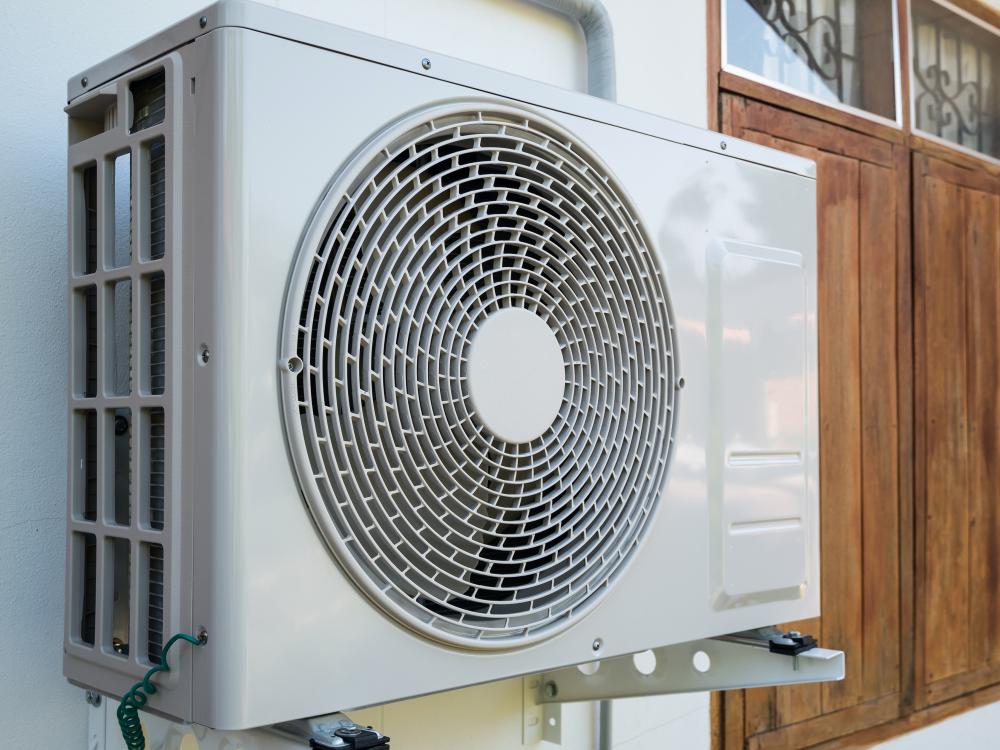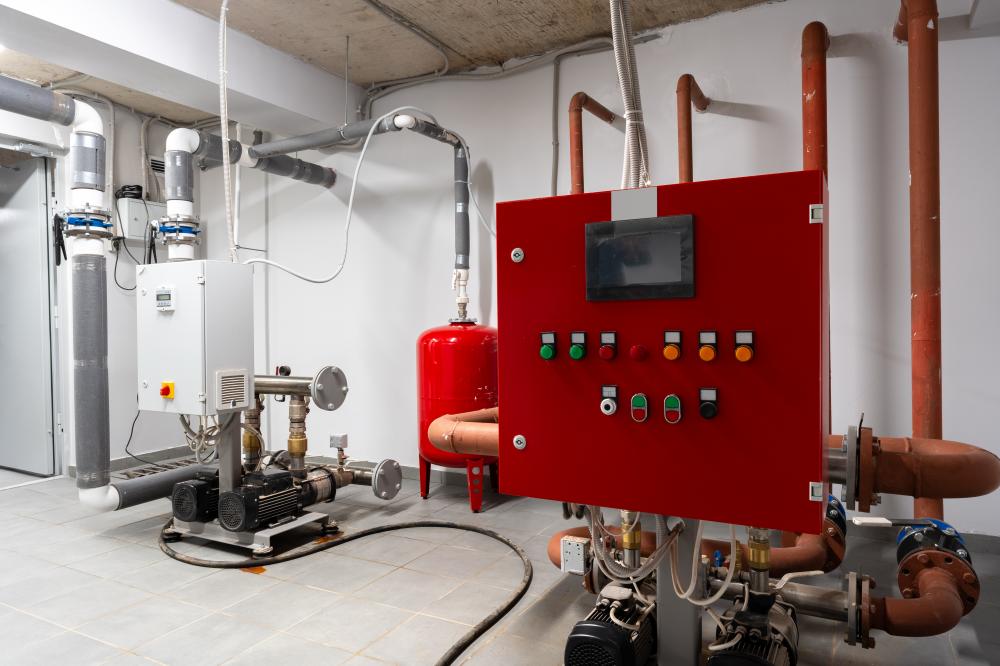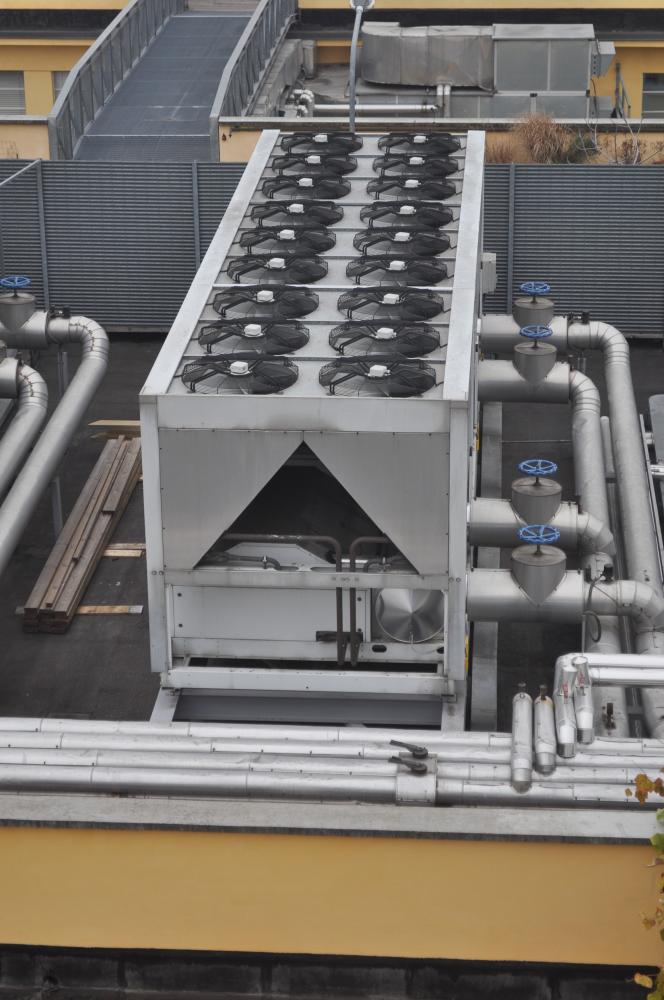
Understanding Heat Pump Technology
At San Fernando Valley HVAC, we often discuss how heat pumps work: benefits for California homeowners are numerous. Essentially, heat pumps transfer heat rather than generating it, making them highly efficient. They function by using a refrigeration cycle to either extract or expel heat, depending on the season. This mechanism allows them to provide both heating and cooling efficiently.
A significant advantage of heat pumps is their ability to provide year-round comfort. During winter, heat pumps extract warmth from the outside air—even in chilly conditions—and transfer it indoors. In summer, the process reverses, removing heat from inside and releasing it outdoors, similar to an air conditioner. This dual functionality makes them versatile and cost-effective, reducing the need for separate systems.
Benefits for California Climates
Given California's mild climate, heat pumps are particularly advantageous. They operate optimally in temperate environments, making them a perfect fit for homeowners in areas like Beverly Hills and Santa Monica. The energy efficiency of heat pumps can help reduce utility bills, aligning well with California's push for sustainable energy solutions.
Many of our clients appreciate how heat pumps work: benefits for California homeowners extend to the financial incentives available. State rebates and federal tax credits can offset initial installation costs, making heat pumps a more accessible option for environmentally conscious residents. Energy savings over time contribute significantly to long-term financial benefits, especially when paired with solar panels.
Installation and Maintenance Considerations
When considering how heat pumps work: benefits for California homeowners also touch on installation processes. Proper installation is crucial for maximizing efficiency. Our team at San Fernando Valley HVAC ensures heat pumps are installed accurately, considering factors such as home size and existing infrastructure. This precision guarantees the system runs smoothly and efficiently.
Regular maintenance is also a key factor. We recommend routine inspections to keep systems running at peak performance. Tasks like cleaning filters and coils and checking refrigerant levels are essential. These steps extend the lifespan of heat pumps, which can last 15 to 20 years with excellent upkeep.
Environmental Impact and Sustainability
How heat pumps work: benefits for California homeowners also span the realm of environmental impact. Heat pumps use electricity, significantly reducing reliance on fossil fuels. This reduction aligns with California's aggressive climate goals, offering a sustainable alternative to traditional heating and cooling systems.
Our clients are often surprised by the reduction in their carbon footprint. By choosing a heat pump, homeowners can contribute to a cleaner environment while enjoying the comfort of their homes. Additionally, heat pumps can improve indoor air quality, filtering and dehumidifying the air for healthier living spaces.
Overcoming Challenges and Optimizing Performance
Despite the numerous benefits, understanding how heat pumps work: benefits for California homeowners also involves addressing potential challenges. One common concern is their performance in extremely cold climates. Although rare in California, heat pumps may require a supplemental heating source during cold spells. However, modern systems have advanced features to maintain efficiency even as temperatures drop.
To maximize performance, it's crucial to utilize programmable thermostats that complement the efficiency of heat pumps. Adjusting settings according to seasonal needs ensures optimal operation. Our technicians provide guidance on these aspects, helping homeowners make the most of their investment.
In conclusion, heat pumps offer a remarkable combination of efficiency, sustainability, and financial savings for California homeowners. By leveraging our expertise at San Fernando Valley HVAC, residents can enjoy the numerous benefits of this technology, tailored to their unique needs and lifestyles.

Understanding Energy-Efficient Heating Solutions
Operating in San Fernando Valley and surrounding areas, we've seen firsthand how Energy-Efficient Heating Solutions can transform homes. The need for such systems is rising, driven by both environmental consciousness and cost-saving motivations. Energy-efficient systems not only reduce carbon footprints but also significantly lower utility bills.
Our experience with thousands of installations has highlighted the importance of considering local climate and household needs when selecting heating systems. Here, we explore how geothermal heat pumps, air-source heat pumps, and radiant floor heating have emerged as leading options in Energy-Efficient Heating Solutions. Each system has unique benefits suitable for varying customer requirements.
Geothermal Heat Pumps
In our professional opinion, geothermal heat pumps stand out as the pinnacle of Energy-Efficient Heating Solutions. These systems utilize the Earth's stable underground temperature to heat homes efficiently. Although installation costs are higher, the investment pays off through reduced energy consumption over time.
Their efficiency and long-term savings make them appealing to environmentally conscious homeowners. We've observed that clients who opt for geothermal solutions appreciate the quiet operation and minimal maintenance, contributing to the overall appeal of this system.
Our NADCA-certified technicians are adept at installing geothermal heat pumps in various settings across San Fernando Valley, ensuring that each unit operates at peak efficiency. It's essential, though, to assess upfront installation feasibility due to specific land and space requirements.
Air-Source Heat Pumps
Air-source heat pumps are another cornerstone of Energy-Efficient Heating Solutions. These systems leverage outdoor air to provide both heating and cooling, offering versatility for homes in mild climates like Southern California. Through government incentives, many homeowners find this option financially accessible.
We've also noticed that air-source heat pump installations are popular because of their dual functionality. They are easy to install and maintain, with features that allow for seamless temperature adjustments year-round.
Our experience reveals that properly maintained air-source heat pumps can maintain optimal efficiency. This system proves particularly economical in moderate climates, where extreme temperature fluctuations are uncommon. Many clients choose these systems for their straightforward installation and reliable performance.
Radiant Floor Heating
Radiant floor heating is a favorite among our clients looking for Energy-Efficient Heating Solutions with a touch of luxury. This system is not only highly efficient but also offers consistent and comfortable heat distribution.
Successful installation, however, depends on the quality of insulation and precision in design. We've seen that homes with radiant floor heating have a cozy atmosphere without hot or cold spots, which appeals to many looking for comfort and efficiency.
Our skilled technicians ensure that each radiant floor system is customized to suit the specific needs of the homeowner. While these systems require careful planning, the end result is always worthwhile, delivering warmth that feels natural and luxurious.
Radiant floor heating is particularly suitable for remodels or new constructions, where integration with existing structures might be challenging. Clients interested in this system should consider the long-term energy savings and enhanced comfort it offers.
Conclusion
Choosing the right heating system from the diverse array of Energy-Efficient Heating Solutions can be daunting. However, with our extensive experience, we're here to guide you through the process smoothly. By understanding unique household needs, budget constraints, and environmental impacts, we aim to offer solutions that best serve each client.
Our commitment to quality and customer satisfaction ensures that every installation meets the highest standards. As we continue to serve San Fernando Valley and beyond, our approach remains rooted in professionalism and innovation, ensuring that we provide superior HVAC services tailored to our clients' needs.
Understanding Cost-Effective Climate Control Systems
At San Fernando Valley HVAC, we've built our reputation by focusing on the needs of our clients in the San Fernando Valley and beyond. When discussing Cost-Effective Climate Control Systems, affordability and efficiency are our primary concerns. Our approach is centered around solutions that ensure a comfortable home environment without breaking the bank. We've found that innovative heating and cooling technologies can significantly impact not just your comfort but also your wallet.
Ductless mini-split systems have emerged as a popular cost-effective solution. These systems allow individual room control, ensuring energy is not wasted heating or cooling unused spaces. This flexibility aids in reducing energy consumption, making them a favorite among our clients, who range from homeowners in Beverly Hills to businesses in Torrance.
The Role of Technology in Energy Efficiency
Our team is trained to integrate advanced HVAC technologies that boost energy efficiency. Variable-speed compressors, for instance, adjust energy use based on the current demand, which avoids unnecessary energy expenditure. We've seen firsthand how these systems optimize energy usage and cut utility costs, especially in demanding climates like Santa Monica.
Smart thermostats are another game-changer in achieving cost-effective climate control. These devices adapt to your schedule and preferences, providing precise control over your home's temperature. Our clients in South San Francisco have reported substantial energy savings by utilizing these intelligent solutions. The integration of such technology is crucial for those looking to maintain both cost-effectiveness and comfort.
Maintenance Tips for Maximizing Efficiency
Our extensive experience in the HVAC industry has shown that regular maintenance plays a significant role in maintaining cost-effective climate control systems. It's essential to replace air filters every three months to ensure optimal airflow and efficiency. Neglecting this can lead to higher energy usage and system strain.
Sealing gaps and ensuring proper insulation are simple yet powerful measures. These steps prevent air leakage, maintaining a stable indoor climate and reducing unnecessary energy usage. Our clients in Simi Valley have found these practices to be valuable in enhancing their system's efficiency.
We always emphasize that professional inspections can prevent costly repairs and system replacements. Our NADCA-certified technicians conduct thorough inspections to identify potential issues early, saving our clients money in the long run.
Incentives and Rebates for Energy Efficiency
Investing in cost-effective climate control systems can be financially rewarding. Many of our clients have benefited from available incentives and rebates, which offset initial investment costs. In California, various state-level rebates support the adoption of energy-efficient technologies.
We guide our clients through the process of applying for these incentives, simplifying the path to achieving a more cost-effective system. Understanding the financial benefits accelerates the shift towards sustainable energy solutions, making it accessible to a broader audience.
By leveraging these rebates, our clients can upgrade their systems with minimal financial strain, fostering long-term savings and environmental benefits.
At San Fernando Valley HVAC, we're committed not only to providing solutions that align with modern demands but also ensuring those solutions are within reach for our diverse clientele.

Is a heat pump worth it in California?
Absolutely! In California, with its mild climate, heat pumps are a perfect fit because they are highly efficient at heating and cooling. From my experience working in areas like Beverly Hills and Santa Monica, I've seen firsthand how homeowners benefit from lower utility bills and increased comfort year-round. The key advantage of heat pumps is their dual functionality, offering both heating and cooling, which eliminates the need for separate systems. Moreover, with state rebates and federal tax credits, the initial investment becomes much more accessible. It's a win-win situation for those looking to save money and contribute to environmental sustainability. Have you considered pairing a heat pump with solar panels for even greater savings?
What is the California incentive for heat pumps?
California offers several incentives to encourage the adoption of energy-efficient technologies like heat pumps. As of my last interaction with clients, there are state-level rebates and federal tax credits available that can significantly offset the initial cost of installation. These incentives align with California's climate goals, making sustainable home solutions more attainable for residents. At San Fernando Valley HVAC, we guide our clients through the process of applying for these incentives, ensuring they maximize the financial benefits. It's worthwhile to explore these opportunities if you're considering upgrading your heating and cooling system. Have you looked into the specific rebate programs available in your area?
Do heat pumps work in 100-degree weather?
Yes, modern heat pumps are designed to efficiently handle temperatures up to 100 degrees and beyond. In hot weather, they operate similarly to an air conditioner by transferring heat from inside your home to the outside. Our clients in cities like Santa Monica and Torrance often experience sweltering summers, and heat pumps have proven reliable in maintaining comfortable indoor environments. It's crucial, however, to ensure that your system is well-maintained and the installation is optimized for your specific home size and layout. At San Fernando Valley HVAC, we strive to ensure that every installation meets these criteria for optimal performance. Have you noticed any specific issues with your current cooling system during peak heat?
What is the downside of a heat pump?
While heat pumps offer many advantages, they do come with some considerations. One common concern, though less applicable in California, is their reduced efficiency in very cold climates. In such cases, a supplemental heating source might be needed. However, for the mild California climate, this is rarely an issue. Another potential downside is the upfront cost, which can be higher than traditional systems. Yet, with available rebates and energy savings, the long-term financial benefits typically outweigh the initial expense. Regular maintenance is crucial to ensure efficiency, and at San Fernando Valley HVAC, we recommend routine check-ups to keep systems running smoothly. Curious about how these maintenance routines can prolong the life of your equipment?
How do heat pumps contribute to sustainability?
Heat pumps are incredibly sustainable as they primarily use electricity rather than fossil fuels, significantly reducing carbon emissions. They align perfectly with California's aggressive climate goals and help homeowners lower their carbon footprint. Additionally, they improve indoor air quality by filtering and dehumidifying the air, which is a lesser-known benefit but essential for a healthy home environment. Many of our environmentally conscious clients are surprised by the impact these systems have on reducing their overall energy consumption. At San Fernando Valley HVAC, we see this as a step toward a cleaner, greener future. Have you thought about how a switch to a heat pump could impact your environmental contributions?
#### Resources for Heat Pump Technology and Energy-Efficient Solutions in California- U.S. Department of Energy – A comprehensive resource for understanding heat pump technology, energy efficiency, and federal incentives. The site offers valuable information on sustainable heating and cooling solutions.
- U.S. Environmental Protection Agency (EPA) – Provides detailed insights into the environmental benefits of heat pumps. The EPA's resources focus on reducing carbon footprints and improving indoor air quality.
- California Energy Commission – A key resource for state-specific incentives, rebates, and programs that promote energy-efficient technology adoption, including heat pumps.
- ENERGY STAR – Offers guidance on selecting energy-efficient appliances, including heat pumps, and highlights the benefits of ENERGY STAR-certified products for energy and cost savings.
- American Council for an Energy-Efficient Economy (ACEEE) – A reputable source for information on energy efficiency policies, technologies, and strategies to improve household energy use, including the integration of heat pumps.
- National Renewable Energy Laboratory (NREL) – Provides research and resources on renewable energy and energy efficiency solutions, including the role of heat pumps in sustainable home energy systems.
